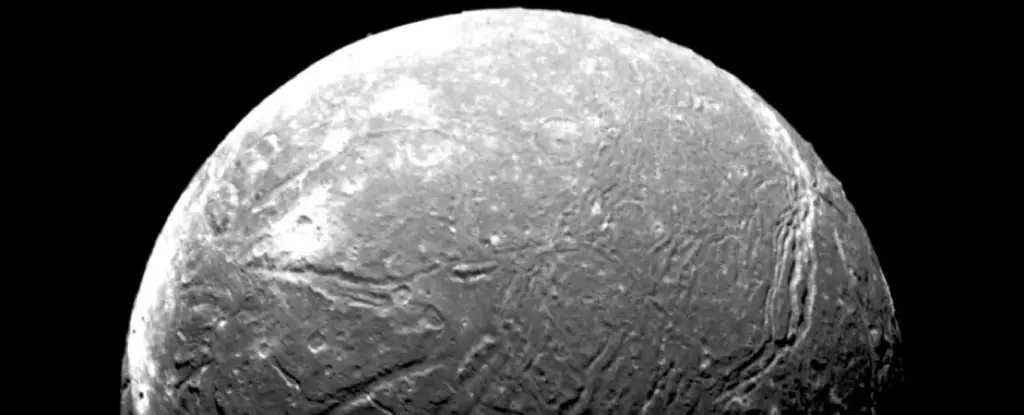The outer planets of our solar system have always been a subject of fascination for astronomers and space enthusiasts. From the scorching temperatures of Venus to the rusty horizons of Mars, each planet and moon offers a unique environment for exploration. Recently, the James Webb Space Telescope made a groundbreaking discovery regarding Ariel, one of Uranus’ moons, suggesting the presence of a subsurface ocean. This finding has sparked curiosity and raised questions about the origins of this mysterious moon.
The Enigmatic Surface of Ariel
Ariel, one of the five moons of Uranus, was discovered in 1851 by William Lassell, a brewer turned astronomer. Known for its icy surface and diverse geological features, Ariel presents a varied landscape of canyons, ridges, faults, and valleys shaped by tectonic activity. Cryovolcanism, a process that drives constant resurfacing, has contributed to Ariel having the brightest surface among Uranus’ moons.
The Discovery of Carbon Dioxide Ice
Recent observations from the James Webb Space Telescope have revealed the presence of carbon dioxide ice on Ariel’s surface, particularly on the trailing edge of features extending away from the moon’s orbital direction. This unexpected finding has led scientists to speculate the existence of an underground ocean on Ariel, a concept previously associated with other moons in the outer solar system.
The traditional explanation for the presence of carbon dioxide on Ariel’s surface involved interactions between the moon’s surface and charged particles in Uranus’ magnetosphere, a process known as radiolysis. However, spectral analysis conducted by astronomers using JWST indicated that Ariel contains some of the richest deposits of carbon dioxide in the solar system. Additionally, signals of carbon monoxide were detected, defying expectations based on average temperatures.
The most compelling hypothesis emerging from these findings suggests that Ariel’s subsurface ocean is responsible for replenishing the carbon oxides on the moon’s surface. Signals of carbonate minerals, which can only form through interactions between rock and water, further support this theory. Despite the possibility of radiolysis playing a role in deposit formation, the presence of these minerals points to a more significant contribution from the subsurface ocean.
While the discoveries made by JWST have provided valuable insights into Ariel’s composition, the mystery surrounding the origin of carbon oxides on the moon remains unsolved. A future space mission to Uranus, specifically focused on exploring its moons, is crucial for unraveling the enigma of Ariel. With its canyons, fissures, and grooves possibly serving as entry points to its interior, Ariel holds the key to understanding the unique geological processes at play in the Uranian system.
The recent observations of Ariel by the James Webb Space Telescope have shed new light on the moon’s composition and geological history. The presence of carbon dioxide ice and carbonate minerals on its surface suggests a complex interplay between surface processes and subsurface interactions. As we continue to uncover the secrets of our solar system’s outer planets, Ariel stands out as a fascinating enigma waiting to be explored further.


Leave a Reply